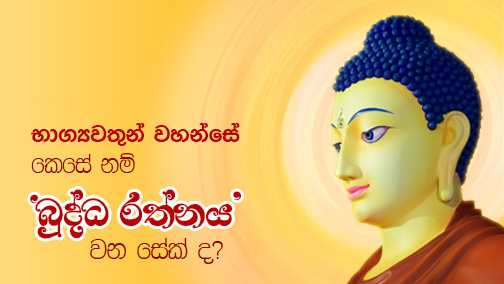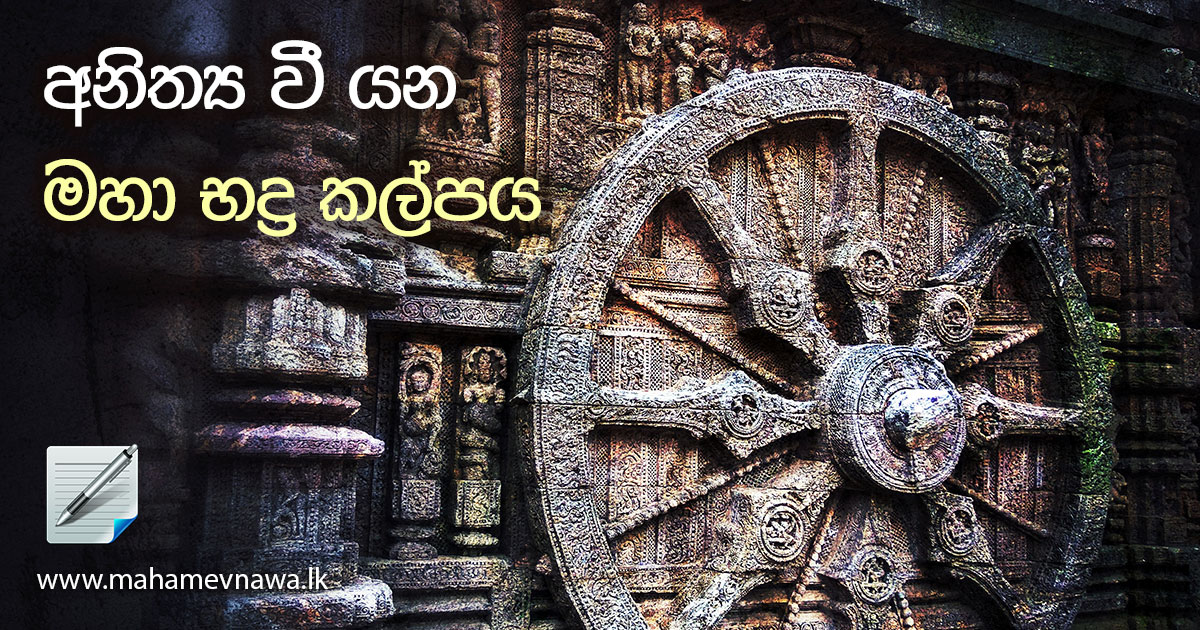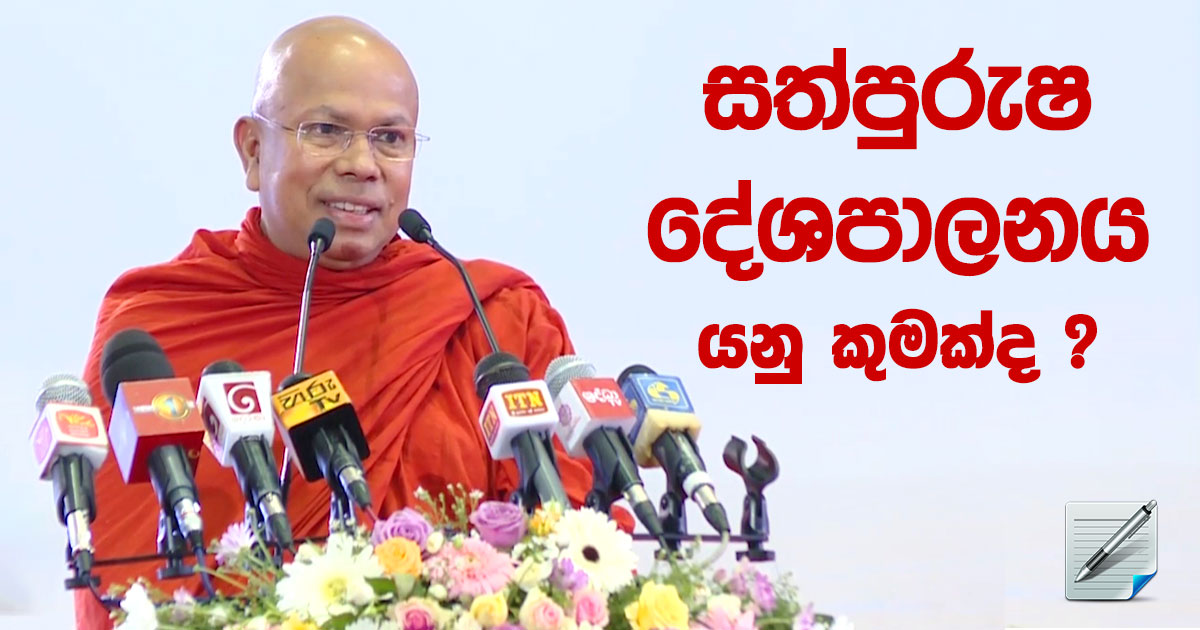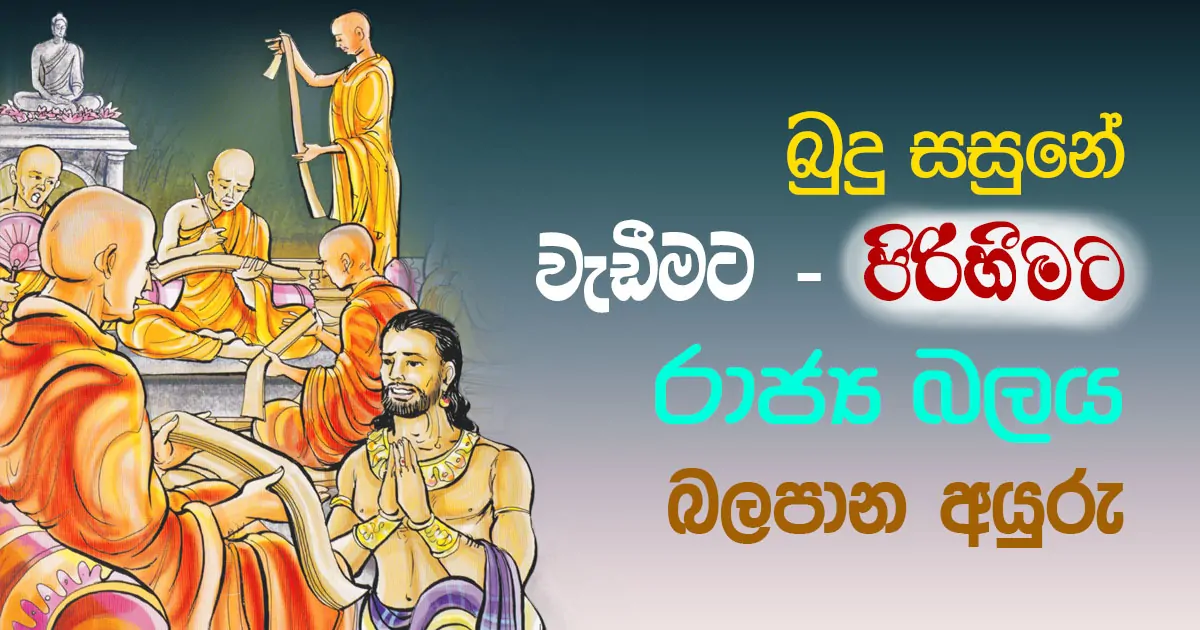Since most of these discourses are translated into Sinhala language with the ability to comprehend the meanings easily, Sinhalese people can read and learn them without any sweat.
People nowadays think that someone would participate in meditation to alleviate problems that person has in his/her life. No one will ever come to these false beliefs if they at least have a tiny knowledge of the Buddhism. Unfortunately, these are the kinds of tainted views they have about meditation. These views seem to spread among Buddhists rapidly because they do not have the wisdom to differentiate the truth from the persuasions based on the false beliefs they encounter.
However, it seems like these false views are only spread in countries like ours. A majority of Indian people holds a completely different view regarding meditation. Even the people in western countries practice meditation with some understanding according to their knowledge.
I will show you a typical example. Once, when I went to USA for a Dhamma related work, the custom officer asked me the reason for my trip. I told him that I am going to teach the devotees about the meditation. That officer was delighted with my answer. He told me it was really great and that he also likes the meditation.
Can you imagine this difference? The people in a western country like USA values meditation while a country like ours has an opposite opinion about it. What is the reason for such apparent difference in the view of an important topic like ‘meditation’? Actually, the people in western countries close to the Buddhism through meditation and not through knowledge. There are two famous topics among these people. Those are the meditation and yoga. They use yoga for their physical fitness while meditation is used for their mental fitness, and they describe it as the inner peace. If you check carefully, do you see any of these items in our country? Our people insult both yoga and meditation. What and why is this type of moral decline can be found in the eastern countries? I will explain you the cause for this decline.
There are mentally depleted and lust thirsty group of people in our countries. They do not have any knowledge about the life. Their lives are empty and have no meaning whatsoever. They just follow a blindfold path trying to sooth an unending passion for lust.
There is another famous but absurd viewpoint in our countries that says the meditation can make you insane. However, there is no such thing and the truth is completely deformed in that notion. Meditation will help you to develop your wisdom by increasing your insight of seeing your life in its exact way, and that is the truth about it.
When a person repeatedly thinks that someone is going to do him harm, he becomes a mental patient. The beginning of a mental illness is the memory loss. Then, the patient will start staring at empty spaces and dwelling in thinking about one particular thing in a distorted manner are the rest of symptoms of a mental disorder.
All these behaviors seem to come freely when that person is alone. He always tries to separate himself from others and tries to spend more and more time alone as it becomes significant. Furthermore, this loneliness makes these types of people to begin meditating as an alternative remedy for what they are dealing with. Even though such a person cannot figure it out, it is an illness that he has. He cannot mend his mind eliminating his disputed thoughts. This is why such person could not meditate in the proper way. All what he can do is thinking according to what he used to, but in a meditating posture. This would make his illness worst by each minute passed by. This is when the people start to notice his mental condition. Since he was meditating by that time, people think he lost his mind because of the meditation. However, if you find out what exactly happened to him, then you will start to realize that it was not the meditation that made him sick, but he was suffering with his condition for sometime even before he started to meditate.
In fact, if meditation made him to lose his mental control, then the people who do not practice it should not have mental disorders at all. However, that is not the case. We know there are mental patients all over the world without any regard to the race or the religion. For example, you know that meditation is not taught to Catholic or Muslim people. Meditation is not a subject for them, and it does not relate to their religion. However, do not they still become sick with mental illnesses? Thus, we can confirm that meditation is not the cause for mental illnesses.
Still, there are rumors we need to deal with when delivering the message of Dhamma. The most pressing and unfortunate matter is the misleading rumors that have been spread throughout our community about meditation. These rumors say that meditation makes people mentally ill. There is one meditation called ‘Kasina Bhāvana’. It is not appropriate for anyone, and I do not recommend it either. Here, the meditation is taken place by looking at a particular color. This meditation does not result in an achievement that could be gained by developing Satipatthāna. It does not help one to be mindful with respect to Chittānupassanā (mindful about what is being thought) and Dhammānupassanā (mindful about the Dhamma). One who practices Kasina meditation only focuses on a color. That is why it does not help to promote one’s mind in achieving the main goal of practicing meditation. Moreover, this Kasina meditation can elevate a person’s mental disability if he had one beforehand even at a minor level. In fact, there are some stories about monks who practiced this meditation and ended up with this sort of problems over the past. These incidents may have caused the above mentioned rumors flying around in the Buddhist community for some time.
The meaning of ‘Bhāvana (meditation)’ is ‘cultivation’ or ‘development’ of a quality. In Aānāpāna Sati meditation, the mindfulness, effort, and wisdom are to be developed. The Loving-kindness, Asuba, and Anittya Sangnā meditations help cultivating love-kindness, state of passionlessness, and wisdom of authentic knowledge of life, respectively. Our teacher, the Supreme Buddha, has taught us adequate number of types of meditations to help us achieving a concentration of mindfulness and to stay in that state as long as one likes. Actually, these kinds of teachings cannot be seen in other religions.
Other than something picked up from Buddhism, they do not have any kind of meditations. We know at present, some people in other religions copy some types of meditations from the Buddhism and practice those. However, their minds can get shuffled and become mentally ill since they practice meditation without any knowledge of it. This is a dangerous situation. I will let you know something that you should understand well. Do not ever start meditating without clarifying this matter. If a mind needs to be developed, first we need the knowledge of it using a scientific teaching such as the Buddhism that describes the mind in an astonishing way. Let us think about a simple and ordinary matter. If someone needs building a road, then he needs to know the science behind it. Also, we need scientific knowledge to make buildings. Do not we? Likewise, we cannot just develop a mind without knowing it properly. Where can we find the technical wisdom of developing a mind? It can only be found in the Buddhism…
On the other hand, there can be two or three persons out of a thousand at most with mental disorders. Even if that is the case, can we neglect the rest of the nine hundred and ninety nine people in vain?
I teach different types of meditations in our meditation programs. What are those types? They are Maitriya Bhāvana (Loving-kindness meditation), Buddhānussati (meditation focused on the great characteristics of the Supreme Buddha), Anittya Sangnā (meditation on thinking about the true nature, the impermanence of things), and Aānāpānasati Bhāvana (meditation focused on inhale and exhale). In Maitriya Bhāvana, we practice to live with minds full of love and kindness. Meditation by thinking about the great characteristics of the Buddha (Buddhānussati) is another tremendous way to develop your mind. With the Anittya Sangnā, one develops a mind capable of revealing the true nature, the impermanence, of the life and all other things around him. Furthermore, Aānāpānasati Bhāvana helps you calm your mind and make it clear to see the natural order of life as it is. Thus, it should be apparent to you and should ask the question: if these meditations are risky for your lives, then what other meritorious deeds do we have to cultivate? If these meditation techniques are not to be thought, then what else is there to think? If that is the case, we might just have to stare at televisions or listen to radios and waste our time thinking only what is being broadcasted. We will also be trapped within the messages published in news papers. In fact, these meditations taught by the Gautama Buddha help you to identify the cloud of hallucination of lies that covers your wisdom from seeing the truth. It will then prepare you to eliminate this hallucination with the penetrating light of the Dhamma. Once you started to practice these meditations, you will begin to see things through as this light of Dhamma propagates throughout your entire life.
Without a properly developed mind by meditation, people who rely on the messages from these media will become desirous, full of lust, full of hatred, or ignorant. Actually, a majority of people in the present society always suffer mentally in this manner. Though, they do not know that they are suffering each moment of their lives. They are also not aware of its danger. This is the ignorance of majority of people in these societies that is trapped within their own desires and malpractices.
A person who has no idea about the Four Noble Truths does not know anything about healing his mind. However, people at present have somewhat better understanding about meditation than the people in the past. In the past, people used to get perturbed by the sight of young people meditating. Everyone thought those children have some sort of problems.
Even though that was the case, their opinion will be different if they confront a foreigner who meditates. They will still talk about highly of the foreigner even if he/she is among the young people of our society. This shows us how hard these shortsighted people would like to strike the arising of a wise generation full of young people in our country. They simply cannot bear the dawn of a bright new generation. It is also clear that they have no idea what the meditation is or what is its significance and how it would influence the arising of a loyal, bright, and a compassionate generation. They just admire and criticize the meditation at the same time without a proper knowledge of it.
Meditation creates an inner peace of a person as a result of practicing it properly. It also gives birth to a healthy and an invigorating mind. However, a broad discussion is required if these benefits are to be achieved.
There is another fictitious standpoint in the Buddhist community today. That is, the idea of a need of hidden advices for the practitioner of meditation before he starts to meditate. In a way, this is a kind of pretence of haughty people who neglect the teaching capability of the Supreme Buddha. We need to identify the danger behind this matter. If we keep the advices regarding meditation secretly or start to convey them to just one person, then there will be a significant risk of corrupting and concealing the Dhamma. I think you know that there are some places where people get secret advices on meditation. Though, you should clarify the fact that there is no such thing as hidden Dhamma in Buddhism. “Our most Fortunate One’s Dhamma brightens when it is revealed and not when concealed.” The Supreme Buddha clearly stated this in his discourses.
If someone conveys any form of Dhamma secretly, then it is significantly doubtful because the Dhamma is not to be concealed…
These situations are serious since the person who gets the advices can refuse them at any time. This is because these advices are given to him in private and not in an open environment.
Most people like to argue different opinions about the forms of meditation present in our society today. However, the Dhamma is a raft that helps us to cross the Samsāra (the repeating state of birth, age, and death). It is not appropriate to refuse Dhamma and just describe one’s own thoughts as Dhamma by showing off his expertise and enjoying it. The Supreme Buddha exemplified Dhamma to a raft with the intention of it to be used to get rid of the Samsāra.
On the other hand, if the idea of giving advices secretly is based on the fact that there are people of different types of characters such as lustful, faithful, malicious, and ignorant, then there is no problem just to consider what the Buddha taught about what kind of meditations that they should follow. This is because the most Compassionate One has showed us what type of meditation should be practiced by people with each of these personalities. For example, a person with a malicious character should test practicing the loving-kindness meditation. If someone is obsessed with his self-centeredness, then he should practice Anittya Bhāvana (meditation about the impermanence).
If these Dhamma advices are being accepted even today, then the Dhamma will still be comprehended (Sanditthika: Dhamma needs to be realized in this life). The Dhamma was well taught (Swakkhāta) and is compatible to any time (Akālika) whether it is past, present, or future.
The teachings in the Buddhism do not vary whether it was the Supreme Buddha’s time or the present time without him. We should first clearly understand these remarkable properties of the Dhamma, and then only we should start practicing meditation. In other words, we need to make the discourses of our teacher prominent for us by opening them. Once the Dhamma is open, everyone will have the passage to its knowledge and in turn it will allow them to practice meditation properly.
In fact, the idea behind developing meditation is to make our own protection by identifying our weaknesses and skills. Furthermore, we try suppressing our weaknesses by finding refuge of the Dhamma. Thus, we need to become one with the virtues that is described in the Dhamma prior to meditation and protect it throughout the journey of realizing the noble truths. This journey is not something we have to take blindly; there is enough guidance in the Dhamma for us to follow the path correctly and mindfully.
The only reason for hundred thousands of people to attend in our meditation programs is the disclosure of the Dhamma. We had the chance to open it to the public. Other than that, the Dhamma is not a private property of the Mahamevnawa Bhavana Monasteries. Everyone should understand that the Mahamevnawa only made the Dhamma open and closer to the general public. That should be the only prominent understanding.
Most Venerable Kiribathgoda Gnanananda Thero
– From the Sadaham Sitmal Yaya – Book 2 written by Tanuja Dharmapala.








